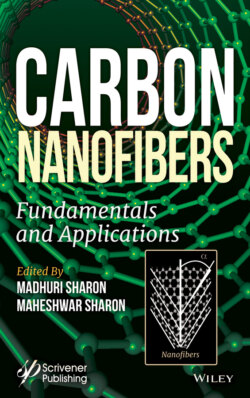Читать книгу Carbon Nanofibers - Группа авторов - Страница 50
2.3.2 Removal of Heavy Metals by CNF
ОглавлениеArsenic is a naturally occurring dissolved element in ground and surface waters throughout the world [33]. It exists in a different oxidation state in organic and inorganic forms in many environmental matrices such as natural water and soil. The predominant oxidation states of arsenic are As(III), i.e., arsenite, and As(V), i.e., arsenate ions [34], which can bind to give organic materials commonly present in the environment. Arsenic is a ubiquitous trace element, classified as semi-metal or metalloid. The toxicity, availability and environmental mobility of arsenic are very much dependent on the chemical forms in which it exists [35, 36]. The problem with arsenic is that it is frequently found at higher than acceptable concentration due to anthropogenic contributions, including pesticides, herbicides, industrial waste and the burning of fossil fuels [37]. The health concerns associated with arsenic are well known and generally the word “arsenic” is readily associated with “poison” Among its various forms, inorganic arsenic species are known to be more toxic than the organic ones and As(III) is more toxic than As(V). Some of the technologies used for removing this notoriously poisonous material are oxidation, sedimentation, coagulation/ co-precipitation, filtration, ion exchange, membrane/reverse osmosis, biological and adsorption modification. Use of nanoforms of carbon is based on the adsorption principle.
For absorbing arsenic, our group has used CNF synthesized from calyx, hair and maize stem by spectrophotometric method using Safranin-O. The method is based on the reaction of As(III) with Potassium Iodate in acidic medium to liberate iodine. The liberated iodine bleaches the pinkish-red color of Safranin-O. The decrease in absorbance at 532 nm is directly proportional to the As(III) concentration and obeys Beer’s Law [38]. As can be seen from Table 2.1, the surface area of CNF is one of the important parameters in adsorbing arsenic from the water.
Sharon’s group [39] have also analyzed the adsorption of arsenic over CNMs prepared from different oils using Toluidine blue dye. They have shown that surface area is one of the important concerns in adsorbing arsenic from the water and have proposed arsenic removal as another application of CNFs. The adsorption was attributed to the presence of dangling bonds on the surface of CNFs. It was felt that CNFs having more dangling bonds on the surface and more surface area can uptake more arsenic
One of the major problems with arsenic removal is that once it has been removed in the form of some materials like ion exchange, etc., is what to do with these materials which contain concentrated solution of arsenic. The advantage with CNF is that it is possible to re-extract absorbed arsenic from CNF into some useful chemical form and use that as a by-product. This facility is not available with any other techniques used for removal of arsenic.
Table 2.1 Surface area of CNF synthesized from different parts of maize plant and their arsenic adsorbing capacity.
| Plant part of maize | Surface area of synthesized CNF | mg arsenic adsorbed |
|---|---|---|
| Cob hair | 95.018 | 31 |
| Corn calyx | 188.850 | 53 |
| Maize straw | 197.164 | 61 |
